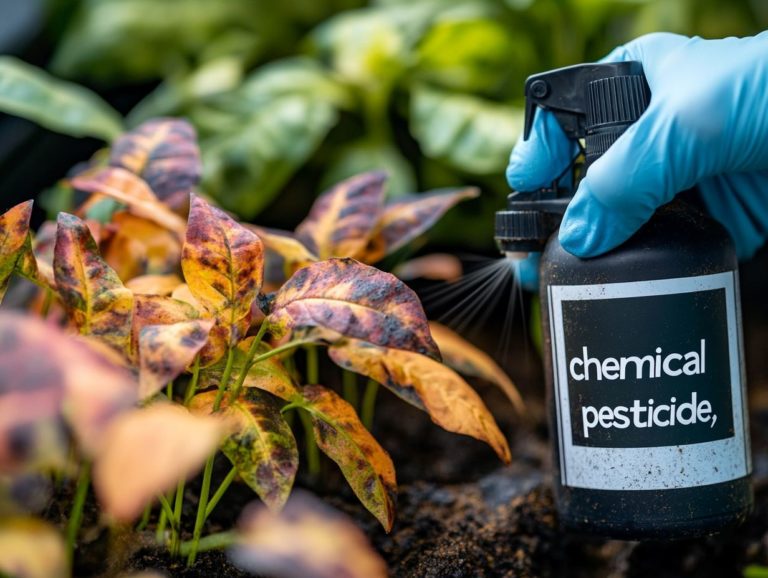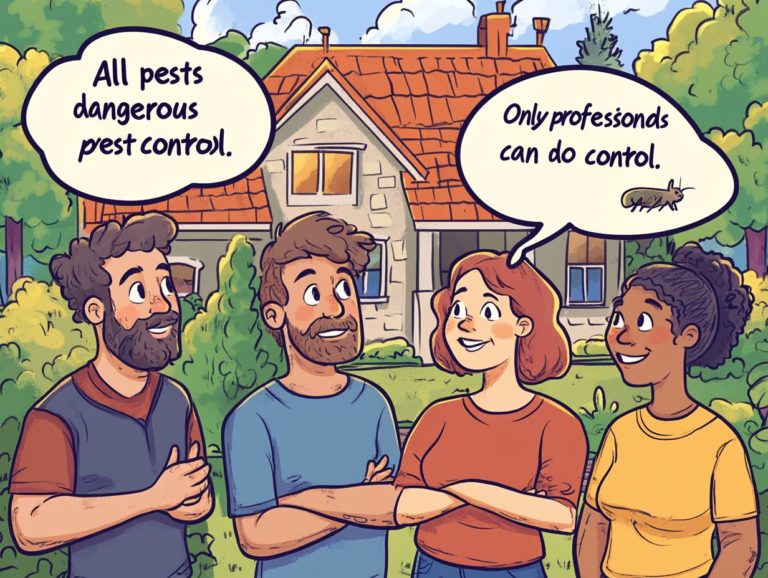The Role of Ladybugs in Pest Control
Ladybugs are delightful guests in your garden. They play a vital role in natural pest control.
These charming little beetles are more than just a pretty sight; they are fierce predators of common garden pests. They earn their title as a gardener’s best friend!
Discover how ladybugs effectively manage pest populations and which nuisances they tackle. We ll also share practical tips for incorporating them into your organic garden strategy.
You ll discover potential limitations and alternative pest control methods.
Join the ladybug revolution and elevate your garden today!
Contents
Key Takeaways:
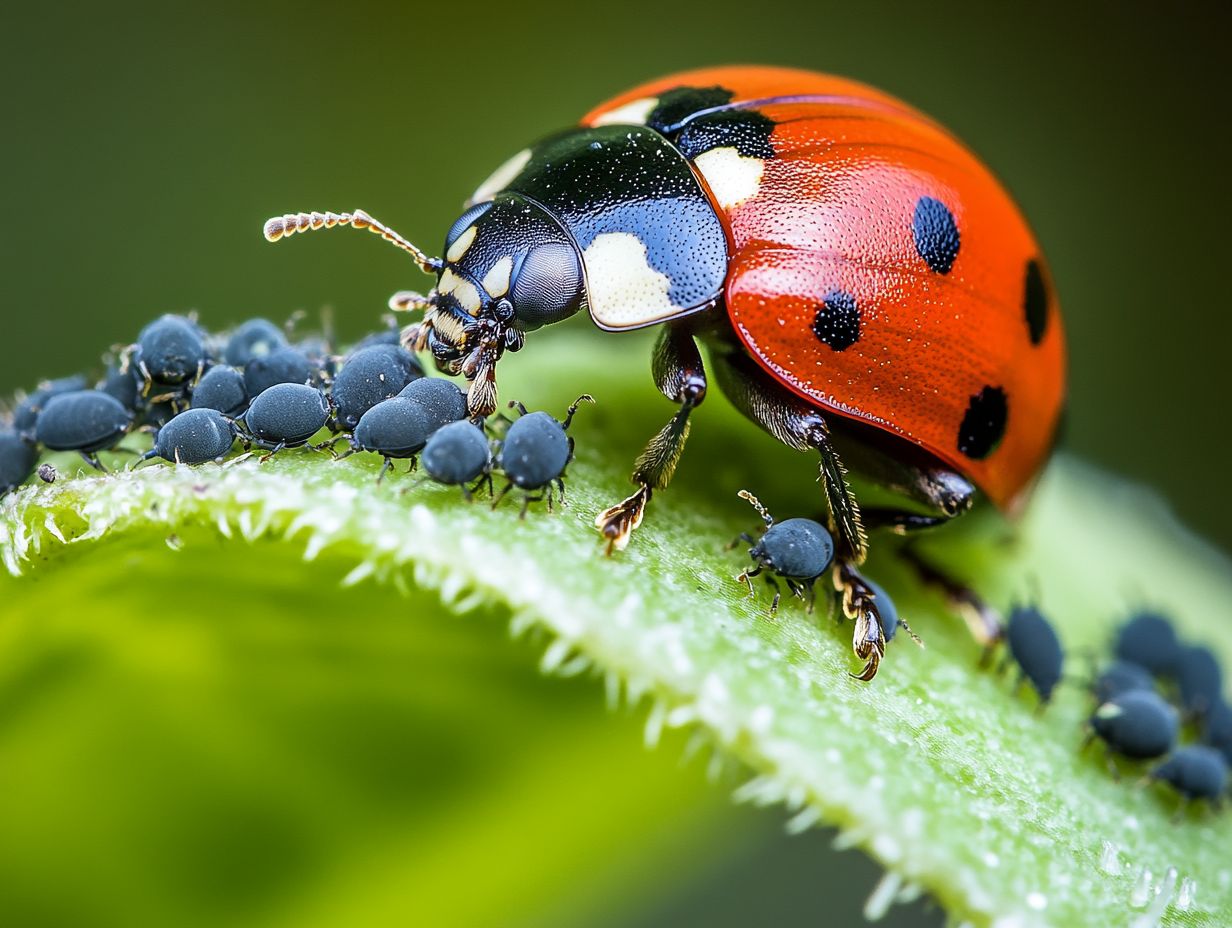
What are Ladybugs and Why are They Beneficial?
Ladybugs, often referred to as ladybird beetles or lady beetles, are small but mighty allies in your garden. They belong to the family Coccinellidae.
Ladybugs maintain how nature stays in balance by keeping pests like aphids and other soft-bodied insects in check.
With various species, including Hippodamia convergens and Harmonia axyridis, these charming insects enrich biodiversity. They enhance ecosystem health as effective natural helpers that keep pests away.
Their fascinating life cycle transitions from larvae to adults. This equips them to reduce reliance on chemical pesticides and embrace sustainable agriculture.
These little powerhouses also boost soil fertility through their droppings. This acts as a natural fertilizer that promotes healthier plant growth.
During their life cycle, voracious larvae feast on harmful insects. The adults also contribute by consuming pollen and nectar, vital for the pollination process.
By fostering greater species diversity, ladybugs provide sustenance for predators like birds. They support conservation efforts aimed at protecting essential habitats.
Ladybugs’ ecological significance is remarkable, embodying the delicate balance needed for vibrant gardens and thriving ecosystems.
How Ladybugs Control Pests
Ladybugs serve as highly effective natural allies in pest control, particularly against prevalent garden nuisances like aphids. Incorporating them into your gardening practices enhances sustainable agriculture and integrated pest management strategies.
Their impressive capacity to consume vast quantities of aphids and other harmful insects lessens dependence on chemical pesticides. This fosters a healthier ecosystem overall.
The Science Behind Ladybug Predation
The science of ladybug predation reveals their ability to target specific pests, particularly aphids. This showcases their unique tendencies as predators, essential for maintaining insect ecology.
Ladybugs employ both vision and olfactory cues to locate prey. This captivating blend of senses enhances their hunting success.
Beyond sharp sensory skills, these beneficial beetles engage in intriguing feeding behaviors that amplify their effectiveness. A single ladybug can devour hundreds of aphids in a single day.
This dynamic predation not only shields plants from potential harm but also nurtures a balanced ecosystem where various species, including insect predators, can flourish.
By managing pest populations, ladybugs play a critical role in fostering biodiversity. They promote healthy plant growth, contributing to an ecological balance that benefits both flora and fauna alike.
Types of Pests Ladybugs Can Control
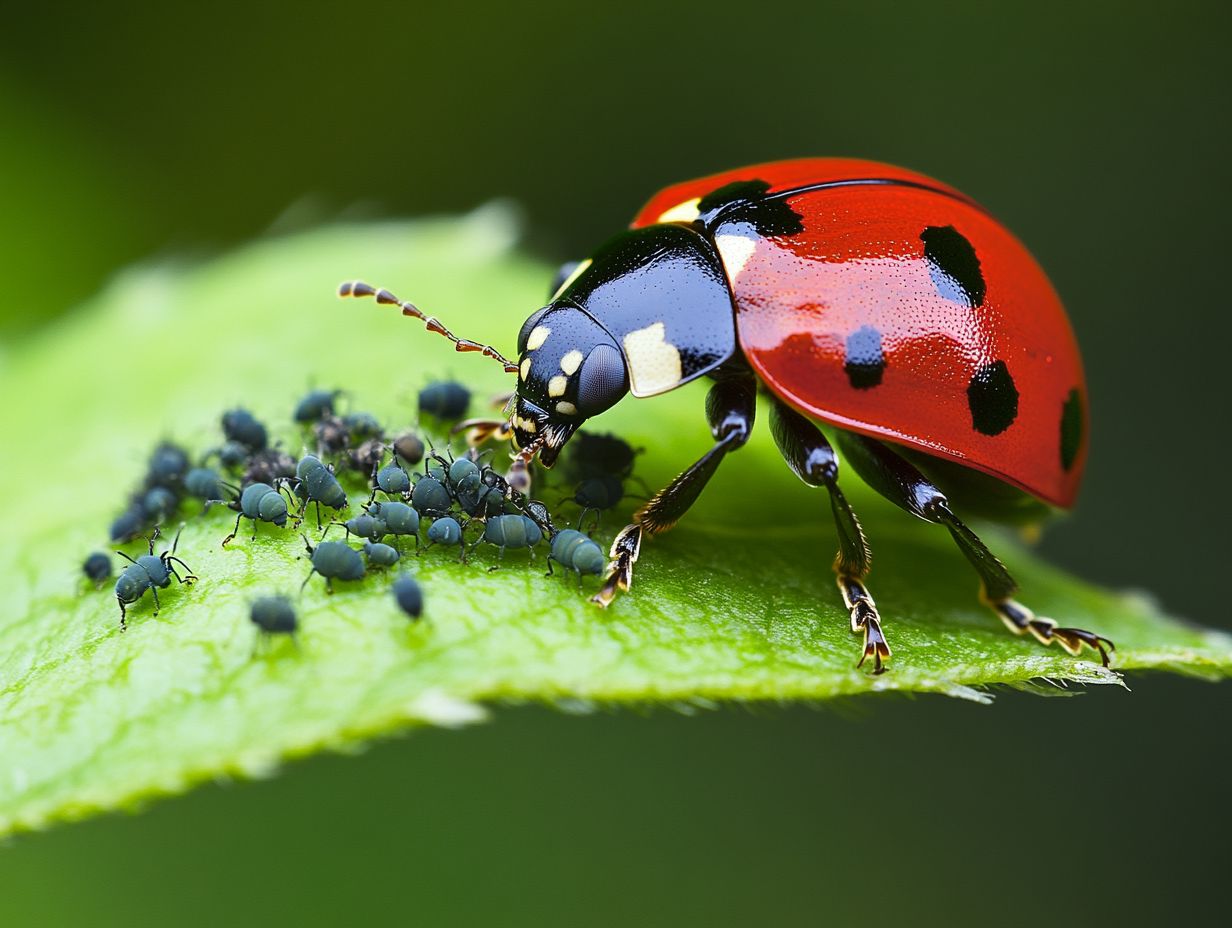
Ladybugs are celebrated for their remarkable ability to control a range of garden pests, with aphids topping the list. However, their prowess extends to other detrimental insects, significantly contributing to effective pest management in both home gardens and agricultural settings.
By serving as vigilant insect predators, ladybugs not only mitigate damage to your plants but also promote enhanced species diversity and contribute to overall garden health within the ecosystem.
Common Garden and Agricultural Pests
Common garden and agricultural pests, such as aphids, mites, and whiteflies, pose a significant threat to plant health and yield. Identifying these pests is crucial for effective pest management and underscores the importance of ladybugs as a natural solution within integrated pest management systems.
These pesky invaders feed on the sap of your plants, disrupting their growth. This makes plants more vulnerable to diseases. Enter the ladybug, with its striking appearance and insatiable appetite. These little allies roam through your gardens and farmlands, actively hunting down aphids and other soft-bodied insects to feast upon.
By preying on these nuisances, ladybugs help maintain a natural balance, reducing your reliance on chemical pesticides that can harm beneficial organisms and disrupt the broader ecosystem. Understanding the behaviors and lifecycle of these pests gives you the power to time your interventions just right, ensuring that the introduction of ladybugs is optimized for maximum effectiveness.
This smart approach promotes healthier plants and supports biodiversity, fostering a more sustainable gardening practice that you can truly be proud of.
Using Ladybugs for Pest Control
Using ladybugs for pest control requires smart ways to release them in your garden to ensure that the timing aligns with the presence of targeted pests, such as aphids. Timing is everything, so don’t wait to release them!
When done correctly, these releases boost your pest management efforts and foster thriving, insect-friendly habitats that encourage ladybug populations.
Release Techniques and Tips
Effective release techniques for ladybugs in your garden involve selecting the right timing and methods, taking into account seasonal temperatures and existing pest populations. This ensures their successful establishment and maximizes their impact on pest control. Understand these factors to boost ladybug populations and enhance biodiversity in your local ecosystem.
To truly harness the benefits, focus on creating an inviting environment for these beneficial insects. Optimal release conditions include warm temperatures with minimal wind think early evenings or overcast days when ladybugs are less likely to scatter immediately.
It s also essential to keep an eye on your garden s pest levels. Releasing ladybugs when aphids or other preferred food sources are present significantly increases their chances of survival. Keep an eye on ladybug activity to see how well they manage pests. This ensures your garden thrives.
Potential Risks and Limitations
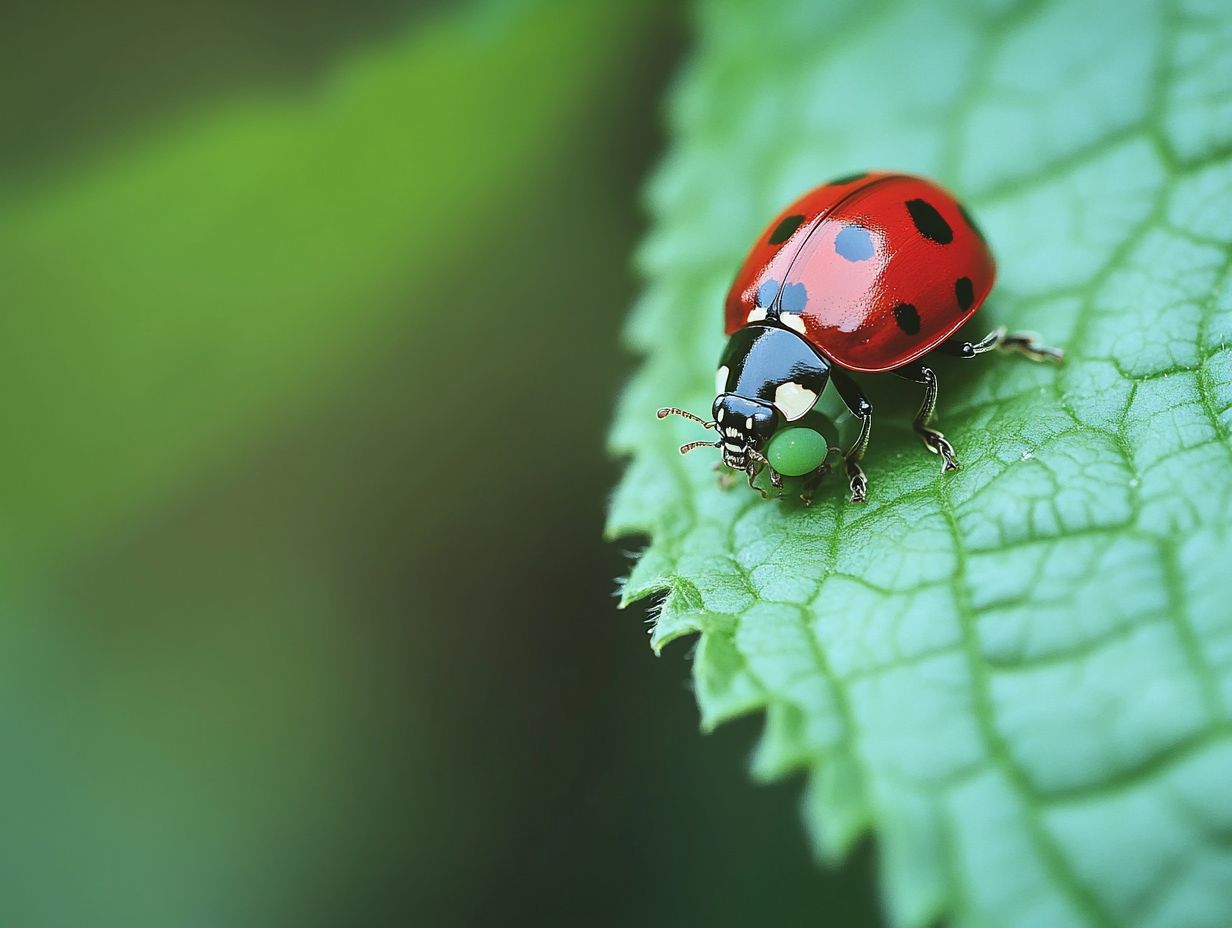
While ladybugs serve as invaluable allies in pest control, it’s important to be aware of the potential risks and limitations they face. Habitat loss and population decline can significantly undermine their effectiveness and disrupt the delicate ecological balance.
Recognizing these challenges is crucial for implementing effective conservation efforts and ensuring the maintenance of species diversity in the ecosystems where ladybugs thrive, emphasizing their ecological importance.
When Ladybugs May Not Be Effective
There are specific conditions under which ladybugs may not serve as the effective pest control agents many hope for. Environmental factors like habitat loss and chemical pesticide use threaten their populations and hunting efficiency. Recognizing these scenarios is essential for crafting effective pest management strategies.
For example, during extreme weather events such as prolonged drought or heavy rain, ladybug populations can decline significantly. This decline hinders their ability to keep pest populations in check. Urban development disrupts ladybug habitats, pushing these beneficial insects out of areas where they once thrived.
When ladybugs fall short, explore exciting alternatives like introducing predatory mites tiny insects that eat pests or utilizing natural insecticidal soaps to enhance your pest management efforts. Promote biodiversity by planting various plants to create a balanced ecosystem. This provides ladybugs and other beneficial insects with the habitats they need to flourish and effectively manage pest issues.
Other Natural Pest Control Methods
Along with employing ladybugs, you have access to a range of natural pest control methods that enhance your pest management efforts while promoting biodiversity in gardens and agricultural landscapes.
These approaches not only complement integrated pest management strategies but also foster healthier ecosystems by minimizing dependence on chemical solutions.
Alternatives to Ladybugs for Pest Management
Consider alternatives to ladybugs for your pest management needs, such as lacewings and parasitic wasps. These beneficial insects control pest populations and enhance biodiversity in your garden. By diversifying your pest control strategies, you can cultivate a more resilient and sustainable ecosystem.
Take lacewings, for example. They are voracious predators of aphids and other soft-bodied insects, making them invaluable allies in any garden. Parasitic wasps, on the other hand, focus on pest larvae, effectively reducing their numbers before they have a chance to wreak havoc.
Incorporating these alternatives not only boosts your pest control efforts but also nurtures a balanced ecosystem where various species can coexist harmoniously. The importance of biodiversity in this context cannot be overstated; it supports natural pest regulation and encourages beneficial insects to flourish.
By integrating these alternatives alongside ladybugs, you can adopt a comprehensive pest management approach that maximizes effectiveness while decreasing reliance on chemical pesticides. This strategy also emphasizes the role of biological control methods in sustainable agriculture.
Frequently Asked Questions
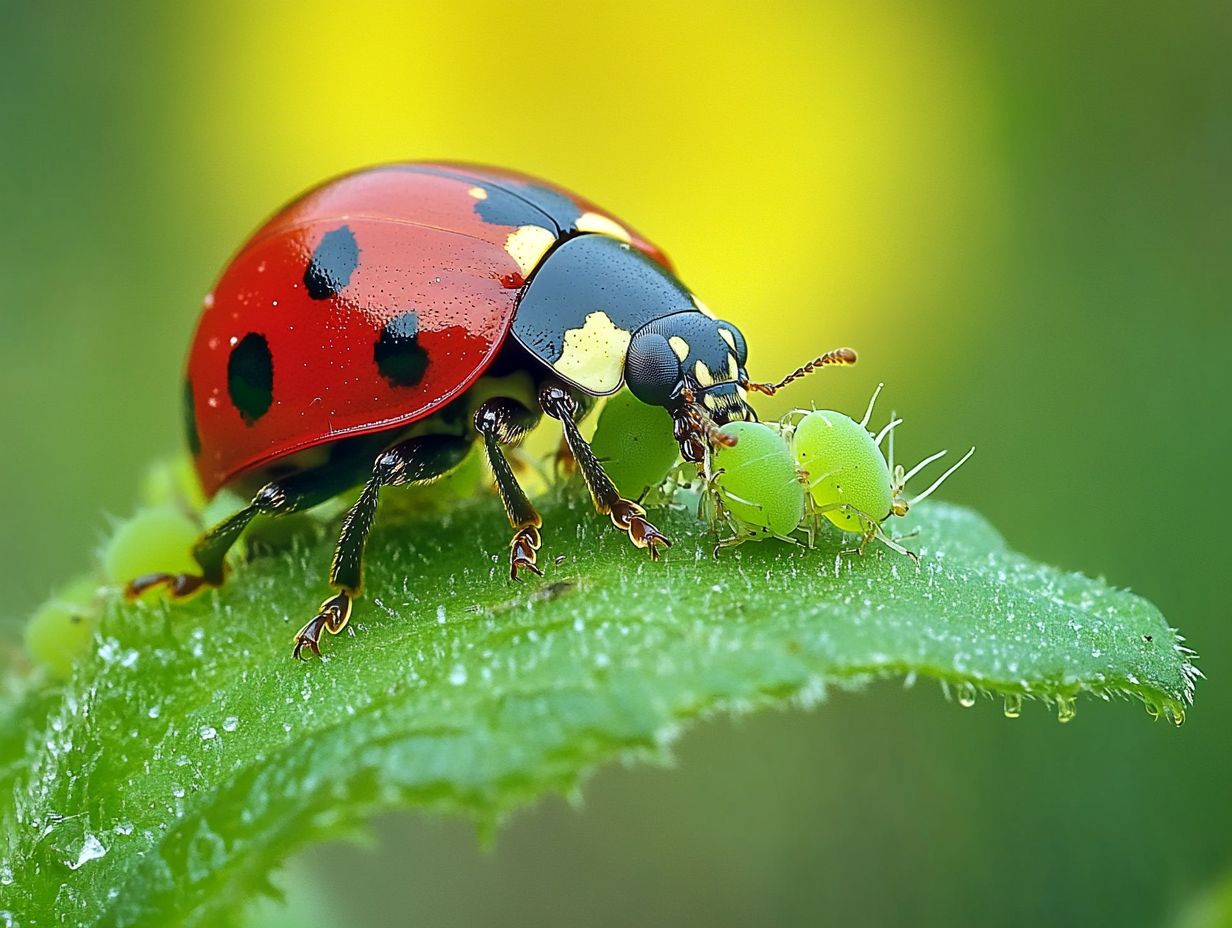
What is the role of ladybugs in pest control?
Ladybugs are natural predators of many common pests, such as aphids, mites, and scale insects. They play a crucial role in controlling these pest populations, and understanding the role of microorganisms in pest control can further enhance agricultural and garden management strategies.
How do ladybugs help with pest control?
Ladybugs consume large numbers of pests, effectively reducing their populations and preventing infestations. They also lay their eggs near pest colonies, providing a continuous source of natural control.
Do ladybugs only eat aphids?
No, ladybugs are omnivores and will eat a variety of pests such as mites, scale insects, mealybugs, and whiteflies. They have been known to consume up to 50 aphids per day!
Can ladybugs be used as a form of pest control?
Yes, ladybugs are commonly used as a form of biological pest control in both commercial and residential settings. They are a safe and natural alternative to chemical pesticides.
Are ladybugs harmful to plants?
No, ladybugs are not harmful to plants. They only consume small, soft-bodied pests and do not damage the plants themselves. In fact, they can be beneficial to plants by decreasing pest damage.
How can I attract ladybugs to my garden for pest control?
You can attract ladybugs to your garden by planting a diverse range of plants that provide them with food and shelter. Ladybugs are also attracted to gardens that are free of chemical pesticides and have a water source nearby.
Start your journey to a pest-free garden today!



